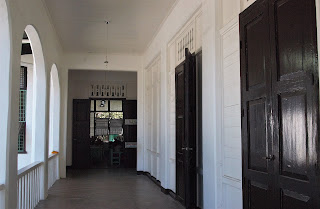 |
| Source: Dept. of Health |
"Measles is a highly contagious respiratory disease caused by a virus," says the Dept. of Health (DOH). "It is transferred from person-to-person by sneezing, coughing, and close contact. Its signs and symptoms include cough, runny nose, red eyes/conjunctivitis, fever, skin rashes lasting for more than 3 days."
Long before Mt. Pinatubo erupted, we went through a measles crisis. We remember having fever but still managed to play with the neighborhood kids in the vacant lot across the street, which had plenty of guava and sineguelas trees to climb. True, we had rashes almost all over our body but those came out after our mother had given us the kulantro bath. That was the folk cure for measles in our time: kulantro: with the rashes out. you're on the way to recovery.
Of course the sanitary inspector (sanidad) like the school dentist came to school at least once a year for the bakuna of school kids. We don't remember for what specific illness but we recall that some of the vaccines caused our arm to swell, and it was painful lifting this up for a few days.
Literature does not tell us exactly if the kulantro seeds that were boiled for banishing the measles were of the coriander/cilantro (Coriandum sativum) because there is another herb called culantro (Eryngium foetidium Linn.). Stuart Exchange, the popular reference website on useful Philippine flora, clarifies that culantro/kulantro is the common name of Eryngium or the sawtooth coriander.
Today, we still haven't heard anyone in the old hometown looking for kulantro seeds. After the dengue vaccine scare, what we see now are mothers with kids in tow trooping to the municipal health center for shots of the anti-measles vaccine.
Even the Aytas in the mountainside sitio of Mabato almost an hour away from the town center had kept barangay health workers busy with their needles ministering to the mothers and kids.
Some time ago, this Ilocano blogger took a taxi driven by a fellow senior citizen, a Bicolano from Virac, Catanduanes. During that 30-minute ride, we exchanged commentaries on, among interesting current news, the measles crisis. We had a good laugh about our kulantro experience, the folk antidote to the measles crisis of our boyhood.
His story on the folkloric cause of measles is an item for cultural mapping in Virac. Their old folks believed that three creatures from the underworld with pockmarked faces ('maraming butlig", his words) are always on the prowl. They hid under the houses and when they go up the house, a household member will surely get infected by the unseen creatures, and will spread it to the others.
It appears now that the 'pockmarked creatures' that prowl in the air come from the sneeze and coughs of someone near you.




